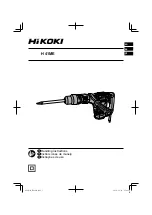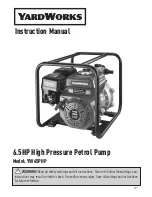
Maintenance
Liebert
®
NXL
™
74
Other DC Sources
If the UPS system uses a DC source other than a factory-supplied Matching Battery Cabinet, perform
maintenance on the DC source as recommended in the DC source manufacturer’s maintenance
manual, available on the manufacturer’s Web site.
4.5
Detecting Trouble
It is important that the operator check the instrument readings if abnormal equipment performance
is suspected. Any metered value that differs appreciably from normal could mean an impending
malfunction and should be investigated.
Items to check include:
• If the UPS has not operated on battery power during the last 10 hours, the batteries should
require little charging current. Battery mimic should indicate normal DC voltage with the battery
charge current no more than 1% of maximum discharge current.
• Input current on each phase should be within 10% of the average input current.
• Alarm messages indicate malfunction or impending malfunction. A daily check of the Display
Screen will help to provide an early detection of problems. Refer to
for information
about interpreting alarm messages.
• Tracing a problem to a particular section is facilitated by alarm messages and the metered
parameter indications.
NOTICE
If the UPS system has an open fuse, the cause should be determined before replacing the fuse.
Contact Liebert Services for assistance.
4.6
Reporting a Problem
If a problem occurs within the UPS, review all alarm messages along with other pertinent data.
Contact Liebert Services at 1-800-LIEBERT to report a problem or to request assistance.
4.7
Corrective Actions
The recommended corrective action for each alarm message on the Display Screen is in
4.8
Upstream Feeder Circuit Breaker Setting Inspections
During normal UPS operations, short-term overload current demand from the bypass source may
reach 10 times the UPS output current rating. This overload current demand may be caused by the
magnetizing inrush current of one or more downstream transformers (i.e., power distribution units)
or faults on downstream branch circuits. The instantaneous trip point(s) of the upstream bypass
feeder breaker(s) must be set to support these temporary overloads. The magnitude of short-term
overload bypass current demand is typically six to eight times the UPS current rating, but must be
determined by analysis on a per-site basis. This analysis, generally known as an End-to-End Fault
Coordination Study, must be done by a registered professional engineer experienced in this activity
and familiar with local codes and related requirements.
Emerson
®
highly recommends periodic inspections of the bypass feeder breaker instantaneous trip
settings, as well as the module input (rectifier) feeder breaker trip settings, to ensure that they are
correct. For a variety of reasons, although typically during circuit breaker maintenance procedures by
others, trip settings have been known to be inadvertently left improperly set. Correct trip setting of
these circuit breakers is most important to achieving high-availability from your Liebert UPS system.
For further information regarding proper trip settings for your feeder breakers, call 1-800-LIEBERT.
NOTE
The instantaneous trip setting of the breaker feeding the UPS bypass input should be high
enough to accommodate short-duration overloads. The bypass static switch power path inside
the UPS can draw up to 10 times the system’s rated current for up to three cycles.
NOTE
While Emerson
®
can provide typical guidelines, the responsibility for the proper breaker trip
settings outside the Liebert-manufactured UPS equipment resides with the owner. Contact
Liebert Services at 1-800-LIEBERT for further details.
Содержание Liebert NXL 250 kVA
Страница 8: ...vi ...
Страница 51: ...Operation 43 Liebert NXL Figure 42 1 N UPS Transfer to Inverter menu commands ...
Страница 57: ...Operation 49 Liebert NXL Figure 45 1 N UPS shutdown menu commands ...
Страница 86: ...Specifications Liebert NXL 78 ...
Страница 110: ...UPS Alarm and Status Messages Liebert NXL 102 NOTES ...
Страница 111: ......
















































